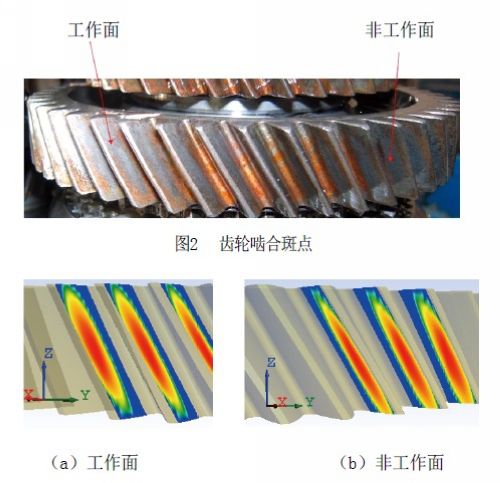NVH is primarily concerned with noise, vibration, and sound quality issues. In terms of manual transmission development, the main problems currently encountered include Whistle, Rattle, Clunk, and so on. Whine noise is mainly caused by the dynamic meshing stiffness of the gear mesh under the influence of transmission error, transmission system matching, etc., resulting in a large change in single-order noise, resulting in a noise similar to the "呜呜" sound intensity; Rattle noise is mainly the transmission Intermittent knocking noise caused by system torsional stiffness mismatch, such as gear pair knocking noise, transmission-clutch knock noise, and transmission-drive shaft knocking noise; Clunk noise is mainly due to transmission shifting system or transmission system stiffness matching Problems such as shifting impact noise.
The following is a case study of various types of NVH problems encountered during the development of our company's own six-speed manual transmission (6MT).
Whine noise
In the 6MT development process, the second gear (23th order) squeaking noise problem was encountered. The performance was in the second gear sliding condition, the speed was 2000~2500r/min, and the noise was “呜呜â€. The objective test of the acoustic test instrument shows that the vehicle has a fixed-frequency noise of 23 orders, and the noise of the order has obvious fluctuations during the taxiing period of 2000~2500r/min (see Figure 1), which is consistent with the subjective feeling.

Figure 1 Noise test waterfall chart
In response to this problem, the gear mesh spot test (see Figure 2) was carried out and analyzed by MASTA software (see Figure 3), and a consistent conclusion was reached: the current design and actual parts, the second gear non-working surface meshing area is not at the center of the tooth surface. The part needs to be microscopically corrected.

Figure 3 MACA software analysis of gear meshing area
Through the micro-adjustment of the helix angle, the gear pressure angle and the optimization of the tooth tip trimming, the gear meshing zone and the meshing contact stress are adjusted, and the noise problem is solved by multiple loading verification and subjective and objective tests.
Rattle noise
In the 6MT development process, the Rattle noise problem with slight idling conditions was also encountered. Since the Rattle noise is discontinuous noise, the customer is sensitive and attaches great importance to this problem. After the transmission and vehicle exchange evaluation, there is no big difference.
In terms of generation mechanism, the main factors affecting Rattle noise are engine output instability, flywheel clutch system vibration reduction problem, suspension stiffness problem, transmission drag torque and unreasonable gear mesh backlash.
From the perspective of the transmission, the integrated backlash of the transmission is first checked. Compared with the empirical value of the integrated backlash of the European, American and Japanese vehicles, the integrated backlash of the transmission (SCM250) produced by our company is within a reasonable range (see Figure 4). Secondly, the drag torque of the transmission is checked, both in the range of 0.3 to 1 N·m, which is a reasonable range.

Figure 4 Comparison of integrated backlash of each gear
In comparison with the normal output torsional vibration fluctuations of European vehicle engines, the final investigation found that the output of the engine of this project was unstable. The engine calibration improvement and the calibration of the torsional vibration damper DMF, the Rattle problem was finally solved.
Clunk noise
During the 6MT development process, it was found that the low gears (such as the first gear and the second gear) were forced to shift gears, and the whole car passed out the humming sound. Check the shafting, shifting mechanism, and synchronizer system to find out the cause of the noise.
Before the investigation, accidentally driving the car does not step on the clutch and force the gear to find that the clutch can also be hoisted into the gear without entering the gear. For the first case, in the 0 to 10km/h speed range, multiple tests can be used. After analysis, it may be caused by too much spline clearance between the clutch and the input shaft of the transmission. For the second case, reducing the spline clearance between the clutch and the input shaft of the transmission may improve the problem.
After actually checking the clutch friction spline and the input shaft spline, it is found that the matching clearance reaches about 0.25 mm. Temporary chrome treatment of the input shaft spline, reducing the gap between the splines, after loading verification, the problem is significantly improved, but the noise is not eliminated.
The suspension with different stiffness was used to compare the loading and found a clear difference. The clutch spline and the suspension are optimized. According to experience, the maximum clearance at the clutch spline must be less than 0.15mm. If it can be controlled within 0.1mm, the shift shock will be significantly improved. This noise problem was finally solved.
Conclusion
Through the above cases, various NVH problems of the transmission and solutions are explained. Today, as the comfort requirements are increasing, there will be more and more NVH problems. This requires us to accumulate basic data, conduct subjective and objective NVH tests as early as possible, and consider and solve NVH problems in the early stage of development.
China leading manufacturers and suppliers of Silicone Cake Mold, Cake Mold , and we are specialize in Silicone Cake Mould,Silicone Cupcake Mold, etc.
The Best Premium, Cake Baking Mold to creat many different cake molds that'll Make Your Friends & Family Swirl Dizzy With This Beautiful Creations and Much Much MORE!! Our silicone items are FDA & LFGB Approved, SGS Certified Finish. It is Made With 100% Pure Silicone.
Silicone Cake Mold
Silicone Cake Mold,Cake Mold,Silicone Cake Mould,Silicone Cupcake Mold
Yangjiang YJCB Trade Co., Ltd , http://www.cbprokitchen.com
